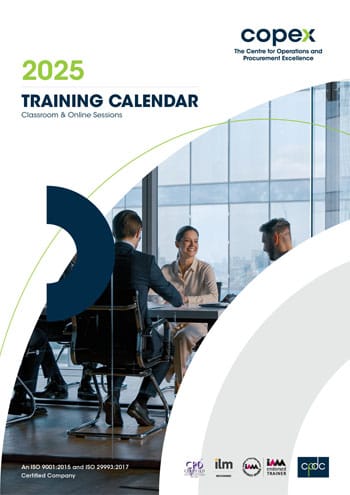
How to Read Body Language During a Negotiation
5 mins readThe Silent Language of Negotiation
In any negotiation, words are only part of the conversation. Much of the communication that influences decisions and shapes outcomes happens without a single word spoken. This is the realm of body language—the subtle yet powerful non-verbal cues that reflect a person’s emotions, attitudes, confidence, and even dishonesty.
Understanding how to read body language during a negotiation is a crucial skill for professionals at all levels. It provides insights that words might conceal, offers early detection of resistance or agreement, and enables negotiators to respond in real time with more precision and empathy. By mastering this silent language, negotiators gain a distinct advantage that can influence outcomes, build trust, and de-escalate potential conflicts.
This article offers a comprehensive guide to interpreting body language in high-stakes negotiation environments, from boardrooms to vendor discussions. We will explore various cues—facial expressions, gestures, posture, eye contact, and more—and how they affect the negotiation dynamic. Whether you’re closing multimillion-dollar deals or managing internal stakeholder alignment, the ability to read non-verbal signals can be the differentiator between success and a missed opportunity.
Why Body Language Matters in Negotiation
Body language reveals the emotional subtext behind spoken words. While someone may say “yes,” their non-verbal cues might communicate hesitation, discomfort, or even disagreement. Relying solely on verbal content without attending to body language can lead to misunderstandings or missed cues.
Here’s why body language is integral to successful negotiations:
- Authenticity Check: It helps determine whether someone truly means what they’re saying.
- Building Rapport: Mirroring and reading gestures can create connection and trust.
- Emotional Intelligence: It enhances a negotiator’s ability to manage their emotions and read the room.
- Tactical Awareness: Recognizing discomfort or hesitation allows room for strategic adaptation.
- Power Dynamics: It can reveal who holds influence in the discussion, regardless of formal title.
Understanding these elements allows negotiators to pivot their approach in real-time, thereby improving effectiveness and confidence.
Key Types of Body Language and What They Indicate
-
Facial Expressions
The face is one of the most expressive areas of the body. Subtle movements like raised eyebrows, pursed lips, or clenched jaws can speak volumes.
- Genuine Smiles: Indicate comfort, openness, and trust.
- Furrowed Brows: May reflect confusion, concern, or disagreement.
- Tight Lips or Jaw Clenching: Often signal tension or suppressed frustration.
- Microexpressions: Involuntary facial reactions that last a fraction of a second; these can reveal true feelings before a conscious mask is applied.
Watch for discrepancies between what is being said and what the face shows.
-
Eye Contact
Eye behavior is a strong indicator of attention, confidence, and truthfulness.
- Steady Eye Contact: Suggests confidence and honesty.
- Shifting Eyes: May imply nervousness or evasiveness.
- Downward Gaze: Could indicate submission or uncertainty.
- Staring: Might be perceived as aggressive or domineering.
Maintaining appropriate eye contact helps establish credibility and trust.
-
Posture and Positioning
The way someone sits or stands speaks to their level of engagement and emotional state.
- Open Posture: Arms uncrossed, body facing forward—signals receptiveness.
- Closed Posture: Crossed arms or legs—may reflect defensiveness or resistance.
- Leaning Forward: Indicates interest and involvement.
- Leaning Back or Turning Away: May denote discomfort or disengagement.
When negotiators adopt open, confident postures, they come across as more assertive and trustworthy.
-
Gestures and Hand Movements
Hands can be expressive tools—or reveal subconscious tension.
- Open Palms: Represent honesty and transparency.
- Pointing Fingers: Can feel aggressive and should be avoided.
- Fidgeting: Indicates nervousness or lack of preparedness.
- Steepling Fingers: Often a sign of confidence and authority.
Use gestures consciously to reinforce your message without appearing overly theatrical or insincere.
-
Physical Proximity
Proxemics—the study of personal space—is especially relevant in face-to-face negotiations.
- Respecting Boundaries: Invading someone’s space can trigger discomfort.
- Leaning In Slightly: Can foster a sense of confidentiality and focus.
- Keeping Distance: Might signify caution or detachment.
Understanding and adjusting proximity helps maintain comfort and professionalism.
Interpreting Clusters Over Isolated Cues
One of the most common mistakes in reading body language is interpreting single gestures in isolation. For instance, crossed arms might mean resistance—but it could also just mean the room is cold.
To avoid misinterpretation:
- Look for clusters of signals rather than single actions.
- Observe changes in baseline behavior. If someone who was previously relaxed starts showing tension, something has shifted.
- Consider the context. A downward gaze might suggest deference in some cultures, not discomfort.
This layered reading approach ensures more accurate insights.
Cultural Nuances in Body Language
Cultural context significantly affects body language interpretation. For example:
- In Western cultures, direct eye contact is a sign of confidence, but in many Asian cultures, it may be seen as disrespectful.
- Gestures such as nodding, pointing, or even smiling carry different connotations in various parts of the world.
When negotiating with international stakeholders, it’s essential to research and understand these cultural distinctions to avoid misunderstandings or unintended offense.
Reading Body Language in Virtual Negotiations
With the rise of remote work, many negotiations now happen over video calls. This changes the dynamics of body language, but many cues are still visible:
- Facial Expressions: Still clearly visible and highly informative.
- Posture: Notice if someone is engaged or distracted based on their positioning.
- Gestures: May be harder to read but still present if the camera is positioned well.
- Tone and Pace of Voice: In virtual settings, vocal cues become more critical in compensating for reduced visual signals.
Encourage camera-on interactions and observe micro-cues such as facial tension, voice modulation, and responsiveness.
How to Use Body Language to Influence Negotiations
Being able to read body language is powerful—but being able to project the right non-verbal cues is equally important. Here’s how negotiators can enhance their presence:
- Practice Mirror Technique: Subtly mirroring the other person’s posture and tone can build rapport.
- Control Nervous Movements: Be aware of fidgeting or repetitive behaviors that may undermine confidence.
- Use Calm and Controlled Gestures: They help reinforce credibility.
- Smile Appropriately: It disarms tension and fosters connection.
- Keep an Upright Posture: It conveys authority and attentiveness.
These techniques help negotiators influence the mood and direction of a discussion without dominating it.
Common Red Flags in Negotiation Body Language
Pay attention to the following warning signs that may signal deception, disengagement, or conflict:
- Sudden Changes in Behavior: Abrupt posture shifts may indicate internal conflict.
- Inconsistent Facial Expressions: Smiling while expressing disagreement is a mismatch worth probing.
- Excessive Grooming or Touching the Face: Often linked with anxiety or dishonesty.
- Lack of Eye Contact When Making a Statement: May reflect discomfort with the truth.
Identifying these red flags early allows a negotiator to recalibrate the conversation or seek clarification.
Developing Your Body Language Awareness
Like any skill, body language interpretation improves with deliberate practice. Here’s how to build that capability:
- Watch Silent Videos: Try interpreting the emotions and dynamics without sound.
- Record Practice Negotiations: Review your own non-verbal behavior to improve.
- Observe Real-Life Interactions: Meetings and presentations are excellent arenas for study.
- Take Notes Post-Meeting: Document observed behaviors and outcomes to refine your interpretation skills over time.
This conscious development sharpens your intuition and enhances your executive presence in all professional encounters.
The Edge of Non-Verbal Intelligence
Reading body language during a negotiation is both an art and a science. It requires empathy, focus, and a deep understanding of human behavior. When integrated into a strategic approach, body language interpretation can become one of the most influential tools in a negotiator’s toolkit.
In a world where every competitive advantage matters, mastering the silent signals of communication elevates not just negotiation outcomes—but leadership presence, interpersonal influence, and corporate success.




